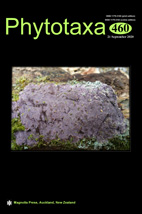Abstract
In this study, we used an integrative approach combining morphological and molecular data with ecology, in order to clarify the identity of a Dombeya newly recorded as occurring in Mayotte. Morphological and molecular evidence are in agreement and convincingly show that specimens of this newly recorded species can be confidently assigned to D. rosacea, previously known only from four herbarium sheets from Madagascar. The new populations of this species in the Comoros significantly expand the extant area of occupancy of D. rosacea. Ecological preferences are also discussed, as populations of D. rosacea were found in greatly contrasting sub-humid habitats. This newly reported geographical disjunction between the Comoros and Madagascar strengthens the evidence for a biogeographic connection between the floras of these two regions.

